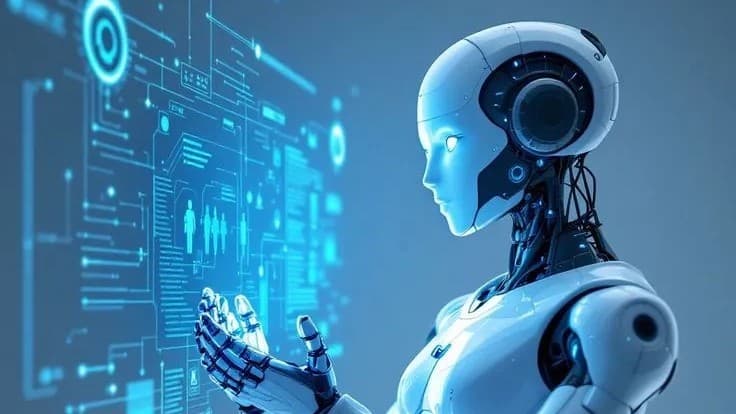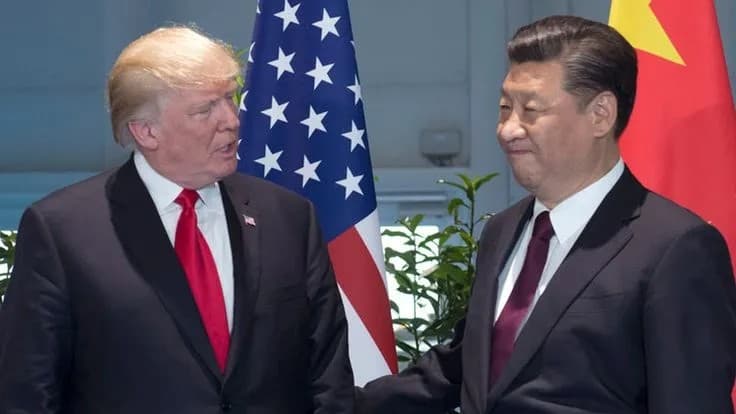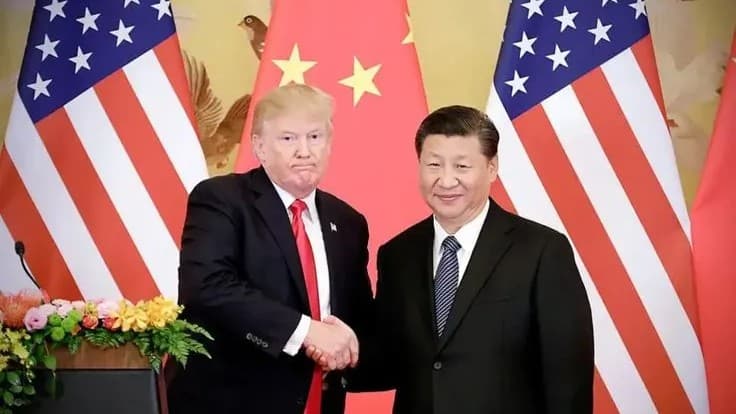Artificial Intelligence (AI): Human Intelligence Living Inside Machines
Artificial Intelligence (AI) is no longer a futuristic idea — it’s the living bridge between human intelligence and machine capability. From classrooms to clinics, and from farms to factories, AI is transforming the way we learn, work, and live. Born in 1956 at Dartmouth University, this once-distant dream has evolved into generative AI — capable of writing, creating, analyzing, and solving problems with human-like understanding. In 2025, AI stands as both an opportunity and a challenge: driving innovation, reshaping industries, and redefining jobs. It empowers students as personal tutors, assists doctors in diagnosis, and helps farmers plan their crops. Yet, with this power comes responsibility — to use AI ethically, wisely, and sustainably. The future doesn’t belong to machines; it belongs to humans who can guide them with empathy, vision, and intelligence.

Imagine a machine that can think, learn, and make decisions just like you. That’s what Artificial Intelligence, or AI, truly is — a technology that gives machines the ability to understand, reason, and act like humans.
AI is not just about robots or computers; it’s the evolution of thought — where machines learn from data, solve problems, and develop new understanding on their own.
The Origin of AI: Where It All Began
The story of AI began in the United States in 1956. During a summer at Dartmouth University, a group of visionary scientists gathered — among them was John McCarthy, now known as the Father of AI.
He introduced a revolutionary idea: machines could think. That single conference lit a spark that eventually changed the entire world.
The goal was simple yet profound — to create machines capable of learning, reasoning, and decision-making like humans.
Today, in 2025, that dream has become a living reality. AI has moved far beyond its early narrow applications to become Generative AI — capable of writing, creating art, designing, and even coding like a human mind.
The Real Impact of AI: Work and Employment
AI has transformed the way we work. Tasks that once took hours now happen in seconds.
- Data analysis occurs instantly.
- Chatbots provide customer support 24/7.
- Writing, coding, and design are now created in minutes.
- In healthcare, AI helps doctors diagnose diseases faster and more accurately.
But progress always comes with change. AI has also replaced some repetitive jobs — data entry, telemarketing, bookkeeping, and basic programming are now handled more efficiently by intelligent systems.
AI: A Blessing or a Threat?
AI is like a sharp sword — its impact depends on how we use it.
On one hand, it’s revolutionizing healthcare, solving climate challenges, and accelerating scientific discovery.
On the other, it threatens jobs, may spread bias, and raises ethical concerns like autonomous weapons.
The truth is simple — AI is neither a blessing nor a curse. It’s a powerful force, and its outcome depends entirely on how wisely and ethically humanity uses it.
The Human Perspective: Partnering with Intelligence
AI is not something to fear — it’s something to embrace responsibly.
If we treat it as a partner rather than a competitor, it can expand our creativity, productivity, and potential.
The key lies in ethical use, accountability, and continuous learning — understanding how to use technology smartly rather than being controlled by it.
AI for Students and Businesses
AI is no longer a scientist’s tool — it’s a companion for everyone.
- For students, it’s a personal mentor that explains concepts, answers questions, and guides careers.
- For businesses, it helps analyze customers, predict market trends, and reduce risks.
Even small businesses are becoming smarter and more efficient through AI-driven insights.
AI in Rural India
AI is quietly transforming rural India too.
- Farmers use data-driven apps to plan crops based on soil and weather.
- Students in villages are learning through AI-powered education platforms.
- Telemedicine is helping overcome the shortage of doctors.
If guided correctly, AI could redefine the future of Indian villages — empowering them with knowledge and opportunity.
AI in Health and Environment
AI has become a trusted partner in medicine.
It analyzes scans, detects diseases like cancer early, and speeds up drug discovery. Even surgeries are now performed with AI-assisted precision.
However, overreliance can bring physical and mental fatigue — reminding us to maintain balance between technology and real life.
Environmentally, AI plays a dual role — while data centers consume energy, AI is also helping predict weather, monitor pollution, and protect wildlife.
It’s both a challenge and a solution — depending on how we guide it.
AI and Education: The Classroom of the Future
The classroom has changed forever. Chalkboards have turned into screens, and an invisible teacher — AI — now sits beside every student.
This teacher understands every learner’s pace, strength, and weakness. It adapts lessons individually — making education more personal and accessible.
No need to raise your hand — the digital mentor is always ready to help.
But challenges remain — data privacy, digital literacy, and access inequality.
Still, when used correctly, AI can transform education from a privilege into an experience.
A Changing India: Powered by AI
India is no longer just a user of technology — it’s becoming a creator.
From smart agriculture to intelligent traffic systems and advanced healthcare diagnostics, AI is reshaping India’s identity — making it faster, smarter, and more human-centered.
Government initiatives like the India AI Mission and AI Centers of Excellence are empowering youth with world-class technology once limited to developed nations.
The Future of AI: Hope and Responsibility
AI is no longer just a machine — it’s the next chapter in the story of humanity.
Its ink is data, and its pen is human imagination.
If we write with wisdom, the future will shine bright;
if not, the same pen can draw shadows.
The future doesn’t belong to machines — it belongs to humans who know how to lead them wisely.
Final Thought
As we step into the future, a voice will echo:
“I am AI, and I am here to walk beside you.”
That’s the moment machines will not just obey — they’ll understand.
AI will continue to evolve, but the true power will always lie with those who use it with ethics, empathy, and vision.
Dhananjay Singh
Professional Content Writer, Researcher & Visionary Storyteller
"तरक्की को चाहिए नया नज़रिया—और यह नज़रिया शब्दों से शुरू होता है।"
More from Dhananjay Singh →

